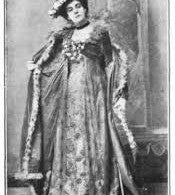Mexican Independence Day: The Women Who Helped Win the War
Feliz dia de la independencia Mexico! (Happy Mexican Independence Day!)
With plenty of music, food, and fun to go around, it’s no doubt that today is Mexico’s biggest celebration of the year. On a day like today, it’s important to remember and honor those who fought to achieve Mexico’s independence— especially those who are not always immediately recognized for their efforts.
While many may know the story of Father Hidalgo and “el grito”, it’s the involvement of specific group that is often overlooked: the women. The Mexican War of Independence was one of the first social revolutions for Mexico— it drove women to break from their traditional homemaker roles and insert themselves into the fight for civil liberties. Known as soldaderas, women joined the war as nurses, supportive wives providing domestic help, and fighters on the front line (although they had to disguise themselves as men, to be able to do so).
Here are just a few of the women who bravely did their part to help win the fight for their nation’s independence:
Maria Luisa was a revolutionary and heroine of the Mexican War of Independence. Born in Erongarícuaro, Michoacán, Maria Luisa joined the rebels as a spy while also running a small store with her husband. Her reports were found by authorities, causing her to be both fined and jailed more than once. Maria Luisa was executed in her hometown in 1817, after not being able to pay off a larger fine for her imprisonment.
Manuela Medina, a Native American from the city of Texcoco, Mexico, was a national heroine of the Mexican War of Independence. Not only did she fight on the forefront, but also became a captain of the rebel forces. Manuela was the first officer to lead her troops into royalist fire and succeed against the Spanish King’s troops. She fought in seven battles of the war, until she was wounded in 1821 and passed away in 1822 due to the injuries.
Better known as the “corregidora” (“the corrector”), Josefa was a well-educated woman of the elite class who organized various literary gatherings where ideas of the Enlightenment and revolutionary conspiracy were shared— her home became the official center for the planning of the insurgence. Although the start of the revolution was planned for mid-October, plans of an uprising were leaked to the Spanish colonial authorities on September 13. Fearing for his wife’s safety, Josefa’s husband decided to lock her to prevent her from meeting with their fellow revolution conspirators. Even being locked up by her husband, Josefa managed to warn her fellow conspirators about the information leak and the government’s plan to capture them all— the news reached to the leaders of the conspiracy, who then began the revolution that same night.
Gertrudis Bocanegra, born in the region of Pátzcuaro (now the state of Michoacan), was an avid-reader who focused on authors of the Age of Enlightenment. When the revolution began, Gertrudis served as a messenger for the insurgents of her region— helping to create a successful communication network between different rebel groups in the state of Michoacan. During the war, she was selected as a leader sent to take over the city of Patzcuaro— Gertrudis was arrested, tortured, and later killed for not giving up information she was asked for.
Leona Vicario first joined Los Guadaulpes, a secret society that received and distributed insurgent information. She then expanded her involvement with the independence movement by using her own fortune and banking connections to secretly finance stages of the rebellion— directly buying arms, supplies, and materials to make artillery. Feeling she could do more for the movement, Leona became one of Mexico’s first female journalists and wrote political articles that would then be distributed to the public to inform them of the need for independence from Spain. She was later given the title “Distinguished and Beloved Mother of the Homeland,” by the Congress of the Union.







Leave a comment